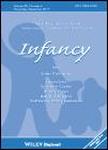版权所有:内蒙古大学图书馆 技术提供:维普资讯• 智图
内蒙古自治区呼和浩特市赛罕区大学西街235号 邮编: 010021

作者机构:Carnegie Mellon Univ Dept Psychol 5000 Forbes Ave Pittsburgh PA 15213 USA
出 版 物:《INFANCY》 (婴儿期)
年 卷 期:2019年第24卷第1期
页 面:57-78页
核心收录:
学科分类:0402[教育学-心理学(可授教育学、理学学位)] 1002[医学-临床医学] 100202[医学-儿科学] 10[医学]
基 金:National Science Foundation [BCS-1228322]
主 题:COMPUTER simulation LEARNING ARTIFICIAL neural networks SENSORY stimulation SENSORY stimulation in newborn infants MEDICAL coding
摘 要:We present two habituation experiments that examined 20- and 26-month-olds ability to engage in second-order correlation learning for static and dynamic features, whereby learned associations between two pairs of features (e.g., P and Q, P and R) are generalized to the features that were not presented together (e.g., Q and R). We also present results from an associative learning mechanism that was implemented as an autoencoder parallel distributed processing (PDP) network in which second-order correlation learning is shown to be an emergent property of the dynamics of the network. The experiments and simulation demonstrate that 20- and 26-month-olds as well as neural networks are capable of second-order correlation learning in a category context for internal features of dynamic objects. However, the model predicts-and Experiment 3 demonstrates-that 20- and 26-month-olds are unable to encode second-order correlations in a noncategory context for dynamic objects with internal features. It is proposed that the ability to learn second-order correlations represents a powerful but as yet unexplored process for generalization in the first years of life.